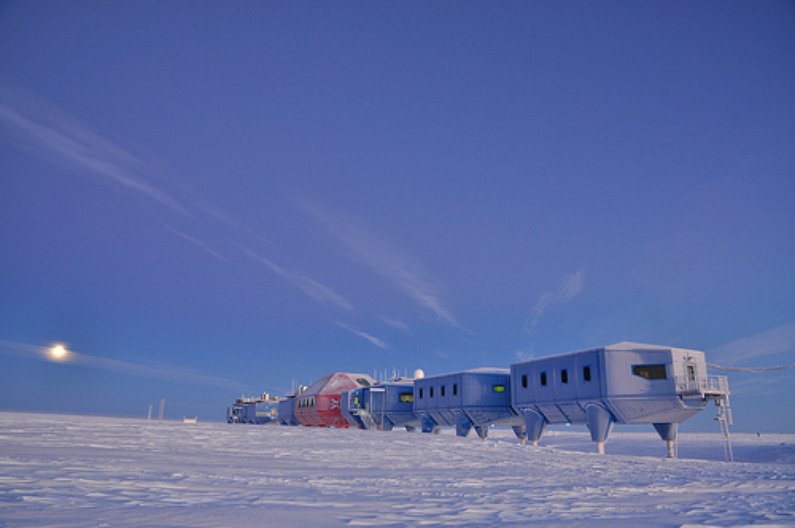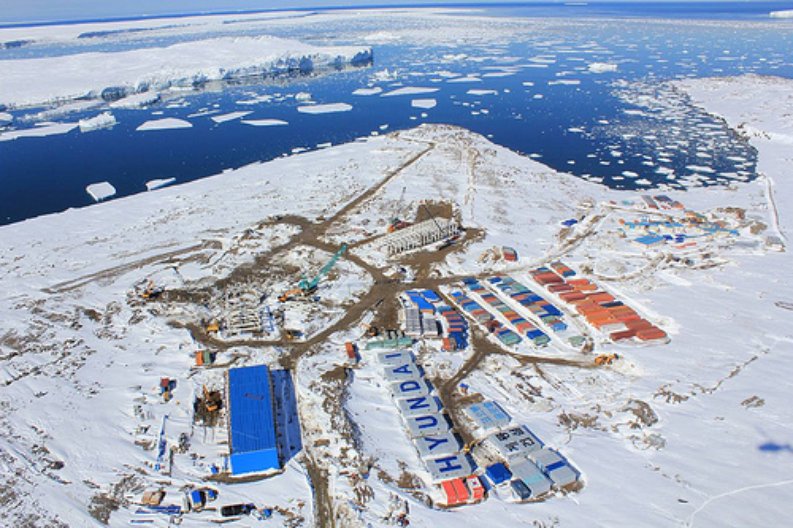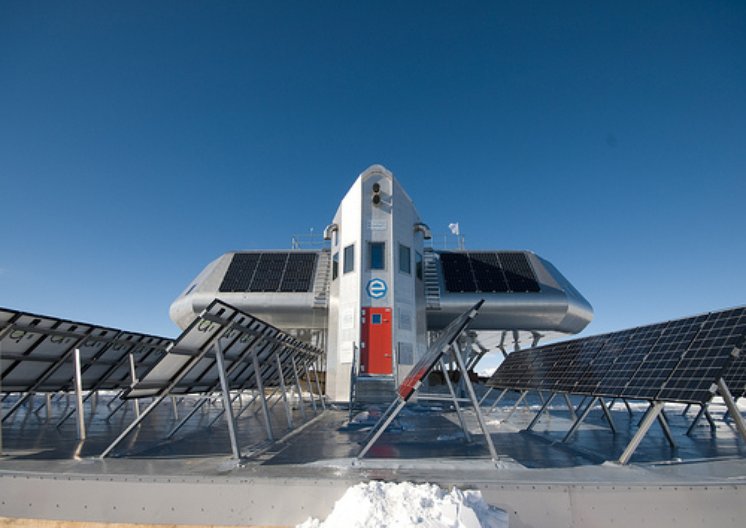21 May 2013
by Kendall Martin-Robbins
Commissioned by the British Council and curated by the Arts Catalyst,Ice Lab: New Architecture and Science in Antarctica is a new international touring exhibition that will illustrate how innovative contemporary architecture is enabling scientists to live and work in one of the most extreme environments on our planet.
The exhibition features five imaginative designs for Antarctic research stations and opens at Architecture and Design Scotland, The Lighthouse in Glasgow from 26 July to 2 October 2013 before touring to Manchester Museum of Science & Industry (21 October - 2 March) and then internationally. From the newly opened British Antarctic Survey’s Halley VI Research station to the speculative Iceberg Living Station, Ice Lab will give visitors a unique view of the inspiration, ingenuity and creativity behind architecture in the coldest, windiest, driest and most isolated place on earth.
The first exhibition of its kind, Ice Lab will include architectural drawings, models, photographs and films that give the visitor a sense of what it takes to live and work in Antarctica. Sources of inspiration for the projects including original drawings from Archigram’s ‘Walking City’ will be on display as well as a new commissioned light and audio work by international visual artist Torsten Laushmann. The Glasgow-based artist will create this work in collaboration with ‘We Made That’, the exhibition’s designers.
Ice Lab will highlight the diverse and cutting edge science that takes place on the frozen continent – from collecting 4.5 billion year old meteorites that illuminate how the solar system was formed to drilling ice cores whose bubbles of ancient air reveal the earth’s climate history; from cutting edge astronomy peering into the world’s clearest skies to studying its Dry Valleys, the closest thing to ‘Mars on Earth’.
The featured projects are:
British Antarctic Survey’s Halley VI The first fully relocatable polar research station in the world became fully operational in February 2013 and signals a new dawn for 21st Century polar research. Opening 100 years after Captain Scott’s famed Antarctic expeditions, this new state of the art facility, designed by Hugh Broughton Architects and engineered by AECOM (UK) fulfils the UK’s ambition to remain at the forefront of scientific endeavour. Located 10,000 miles from the UK on a floating ice shelf, the new station is designed to be self-sufficient, able to withstand freezing winter temperatures of minus 55ºC, have minimal impact on Antarctica’s pristine environment, and be an aesthetically stimulating place to live and work.
Princess Elisabeth Antarctica Conceived, designed, constructed and operated by the International Polar Foundation (Belgium), Princess Elisabeth is Antarctica's first zero-emission station. Perched on a nunatuk, 200km from the coast, at an altitude of 1400m, the aerodynamic stainless steel structure can withstand strong Antarctic wind, and is layered so that no form of interior heating is needed. The station seamlessly integrates renewable wind and solar energy, water treatment facilities, passive building technologies and a smart grid for maximising energy efficiency.
Bharati Research Station India’s third Antarctic research station by bof Architekten / IMS (Germany) is a striking modernist structure made from 134 prefabricated shipping containers. Wrapped in a special aluminium case its extensive glazing offers magnificent panoramic views whilst withstanding powerful winds, below 40 degree Celsius temperatures, blizzards and unfathomable loads.
Jang Bogo Korea is becoming a significant player in Antarctic research and Jang Bogo, by Space Group (South Korea), will be one of the largest year-round bases on the continent when it opens in 2014. The station’s aerodynamic triple-arm design will provide resistance to the elements and accommodate up to 60 personnel during the busy summer season.
Iceberg Living Station A speculative design by MAP Architects (Denmark) for a future research station made entirely from ice, Iceberg Living Station negates the need to transport foreign materials to Antarctica. The station will be holed out of a large iceberg, using caterpillar excavators that are traditionally used to clear snow. It will eventually melt, resolving the issue of removing it at the end of its life course.
An events programme will run alongside the exhibition including film screenings, talks and workshops in architecture, design, art and science.
Vicky Richardson, Director Architecture, Design, Fashion at the British Council, said: “The new wave of Antarctic research stations show the inventiveness in design and engineering required to build in Earth’s most extreme conditions. In the same way that scientists from around the world collaborate in Antarctica, these buildings are made possible by cooperation between nations, so it is highly appropriate that the British Council should be commissioning this exhibition, which will tour in the UK before travelling overseas.”
Jim MacDonald, Chief Executive of Architecture and Design Scotland, said: “It's great that we’re hosting the premiere of this fascinating exhibition. By exploring a series of innovative building projects in one of the harshest climates on earth, the exhibition can help us develop ideas on sustainable design for our own changing and challenging climate. We hope as many people as possible take this opportunity to see the innovation and ingenuity shown in these amazing projects.”
Ice Lab:New Architecture and Science in Antarctica is curated by The Arts Catalyst and features the work of Hugh Broughton Architects, bof Architekten, David Garcia, Space Group, International Polar Foundation and Torsten Lauschmann.
Glasgow
26 July – 2 Oct 2013
Architecture and Design Scotland, Level 2, The Lighthouse
11 Mitchell Lane,
Glasgow G1 3NU
Manchester (during the opening of Manchester Science Festival)
21 October - 6 January*
*EXTENDED UNTIL 2 MARCH DUE TO POPULAR DEMAND
Liverpool Road
Castlefield
Manchester M3 4FP







